Safi Shams Muhtasimul Hoque
Chirp-Based Over-the-Air Computation for Long-Range Federated Edge Learning
Jun 22, 2022



Abstract:In this study, we propose circularly-shifted chirp (CSC)-based majority vote (MV) (CSC-MV), a power-efficient over-the-air computation (OAC) scheme, to achieve long-range federated edge learning (FEEL). The proposed approach maps the votes (i.e., the sign of the local gradients) from the edge devices (EDs) to the linear CSCs constructed with a discrete Fourier transform-spread orthogonal frequency division multiplexing (DFT-s-OFDM) transmitter. At the edge server (ES), the MV is calculated with an energy detector. We compare our proposed scheme with one-bit broadband digital aggregation (OBDA) and show that the output-power back-off (OBO) requirement of the transmitters with an adjacent-channel-leakage ratio (ACLR) constraint for CSC-MV is lower than the one with OBDA. For example, with an ACLR constraint of -22 dB, CSC-MV can have an OBO requirement of 6-7 dB less than the one with OBDA. When the power amplifier (PA) non-linearity is considered, we demonstrate that CSC-MV outperforms OBDA in terms of test accuracy for both homogeneous and heterogeneous data distributions, without using channel state information (CSI) at the ES and EDs.
Over-the-Air Computation with DFT-spread OFDM for Federated Edge Learning
Dec 26, 2021
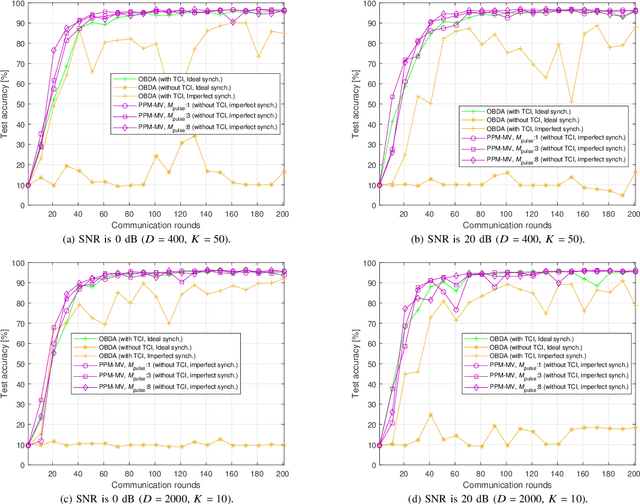
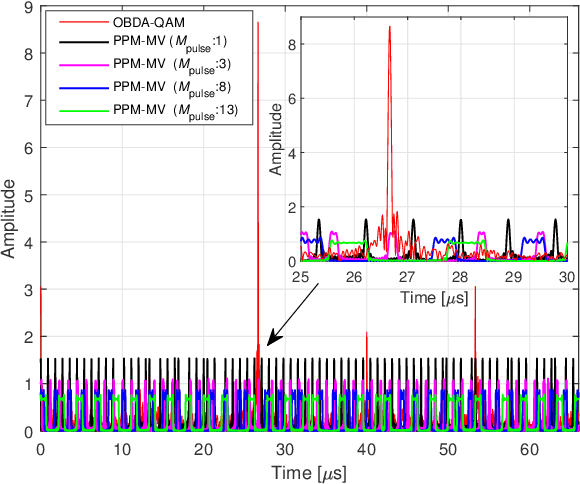
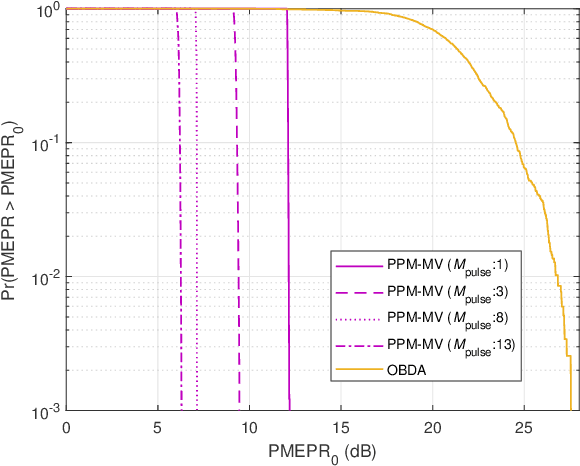
Abstract:In this study, we propose an over-the-air computation (AirComp) scheme for federated edge learning (FEEL) without channel state information (CSI) at the edge devices (EDs) or the edge server (ES). The proposed scheme relies on non-coherent communication techniques for achieving distributed training by majority vote (MV). In this work, the votes, i.e., the signs of the local gradients, from the EDs are represented with the pulse-position modulation (PPM) symbols constructed with discrete Fourier transform (DFT)-spread orthogonal frequency division multiplexing (OFDM) (DFT-s-OFDM). By taking the delay spread and time-synchronization errors into account, the MV at the ES is obtained with an energy detector. Hence, the proposed scheme does not require CSI at the EDs and ES. We also prove the convergence of the distributed training when the MV is obtained with the proposed scheme under fading channel. Through simulations, we show that the proposed scheme provides a high test accuracy in fading channels while resulting in lower peak-to-mean envelope power ratio (PMEPR) symbols.
Distributed Learning over a Wireless Network with FSK-Based Majority Vote
Nov 02, 2021
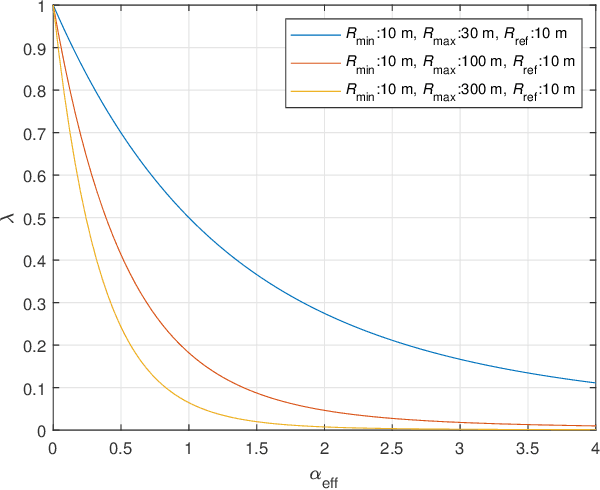
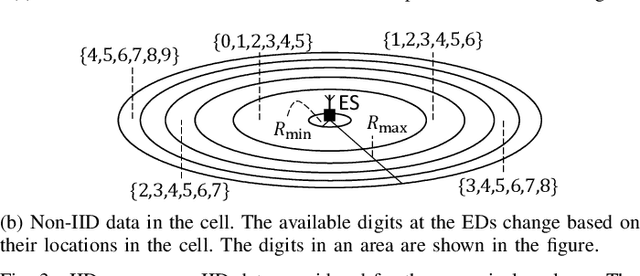
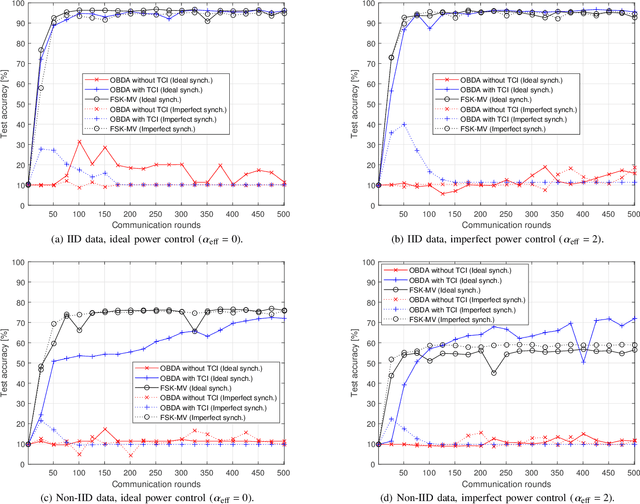
Abstract:In this study, we propose an over-the-air computation (AirComp) scheme for federated edge learning (FEEL). The proposed scheme relies on the concept of distributed learning by majority vote (MV) with sign stochastic gradient descend (signSGD). As compared to the state-of-the-art solutions, with the proposed method, edge devices (EDs) transmit the signs of local stochastic gradients by activating one of two orthogonal resources, i.e., orthogonal frequency division multiplexing (OFDM) subcarriers, and the MVs at the edge server (ES) are obtained with non-coherent detectors by exploiting the energy accumulations on the subcarriers. Hence, the proposed scheme eliminates the need for channel state information (CSI) at the EDs and ES. By taking path loss, power control, cell size, and the probabilistic nature of the detected MVs in fading channel into account, we prove the convergence of the distributed learning for a non-convex function. Through simulations, we show that the proposed scheme can provide a high test accuracy in fading channels even when the time-synchronization and the power alignment at the ES are not ideal. We also provide insight into distributed learning for location-dependent data distribution for the MV-based schemes.
Index Modulation with Circularly-Shifted Chirps for Dual-Function Radar and Communications
Sep 28, 2021



Abstract:In this study, we propose index modulation (IM) with circularly-shifted chirps (CSCs) (CSC-IM) for dual-function radar and communication (DFRC) systems. The proposed scheme encodes the information bits with the CSC indices and the phase-shift keying (PSK) symbols. It allows the receiver to exploit the frequency selectivity naturally in fading channels by combining IM and wideband CSCs. It also leverages the fact that a CSC is a constant-envelope signal to achieve a controllable peak-to-mean envelope power ratio (PMEPR). For radar functionality, CSC-IM maintains the good autocorrelation (AC) properties of a chirp by ensuring that the transmitted CSCs are separated apart sufficiently in the time domain through index separation (IS). We investigate the impact of IS on spectral efficiency (SE) and obtain the corresponding mapping functions. For theoretical results, we derive the union bound (UB) of the block error rate (BLER) for arbitrary chirps and the Cramer-Rao lower bounds (CRLBs) for the range and reflection coefficients for the matched filter (MF)-based estimation. We also prove that complementary sequences (CSs) can be constructed through CSCs by linearly combining the Fourier series of CSCs. Finally, through comprehensive comparisons, we demonstrate the efficacy of the proposed scheme for DFRC scenarios.
 Add to Chrome
Add to Chrome Add to Firefox
Add to Firefox Add to Edge
Add to Edge